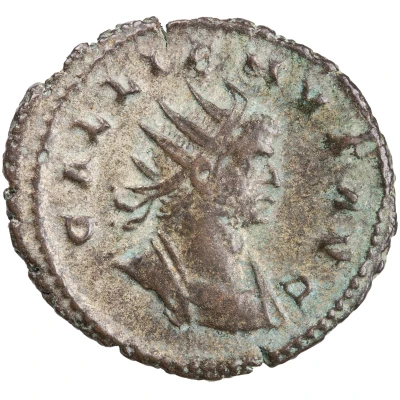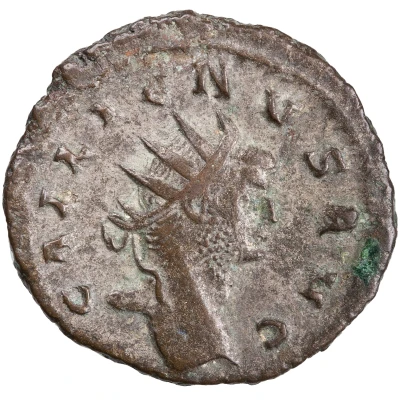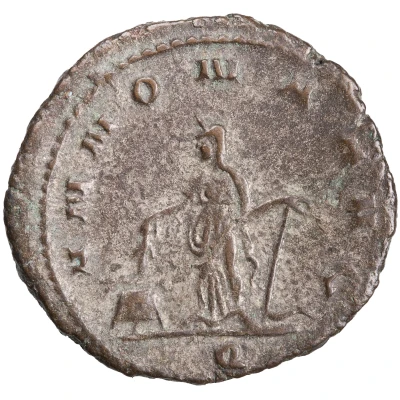


© American Numismatic Society (ANS)
Antoninianus - Gallienus ANNONA AVG; Abundantia
| Silver | 3.6 g | 22.5 mm |
| Issuer | Rome › Roman Empire (27 BC - 395 AD) |
|---|---|
| Emperor | Gallienus (Publius Licinius Egnatius Gallienus) (253-268) |
| Type | Standard circulation coin |
| Years | 260-268 |
| Value | Antoninianus (1) |
| Currency | Antoninianus, Reform of Caracalla (AD 215 – 301) |
| Composition | Silver |
| Weight | 3.6 g |
| Diameter | 22.5 mm |
| Shape | Round (irregular) |
| Technique | Hammered |
| Demonetized | Yes |
| Updated | 2024-10-05 |
| Numista | N#288609 |
|---|---|
| Rarity index | 97% |
Reverse
Abundantia, draped, standing left, holding corn-ears in right hand and anchor or horn in left hand; at her feet, modius. Officina mark in right field.
Script: Latin
Lettering:
ANNONA AVG
Q
Translation:
Annona Augusti.
Imperial grain supply.
Comment
Example of this type:American Numismatic Society (ANS)
Source:
Online Coins of the Roman Empire (OCRE)
Interesting fact
The Antoninianus coin was issued during the reign of Gallienus, who was a Roman emperor from 260 to 268 AD. During his reign, the Roman Empire was facing numerous challenges, including invasions by barbarian tribes and internal conflicts. Despite these challenges, Gallienus was able to maintain the empire's stability and issue coins like the Antoninianus, which was a standard circulation coin at the time. The coin's design features the image of Abundantia, the Roman goddess of abundance and prosperity, on the reverse side. This suggests that the coin was intended to promote the idea of prosperity and abundance during a time of economic and political uncertainty. The coin's silver content and relatively low weight also indicate that it was intended for everyday use by ordinary people, rather than being a high-value coin reserved for the elite. Overall, the Antoninianus coin provides a fascinating glimpse into the economic and political conditions of the Roman Empire during the 3rd century AD, and highlights the importance of coins as a means of communication and propaganda in ancient societies.

